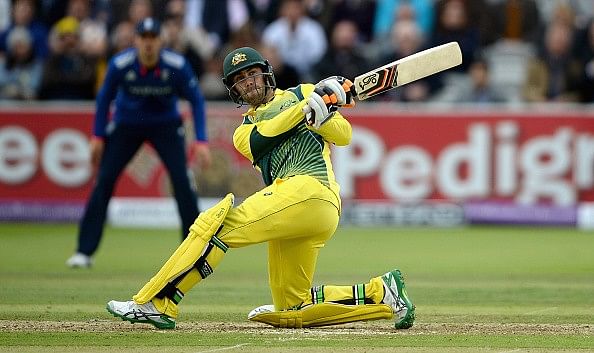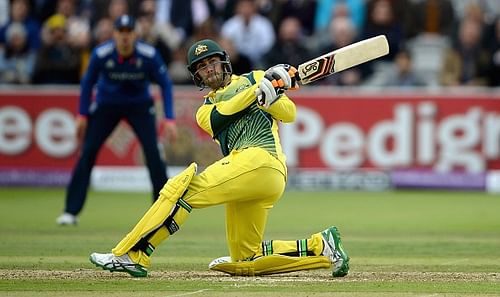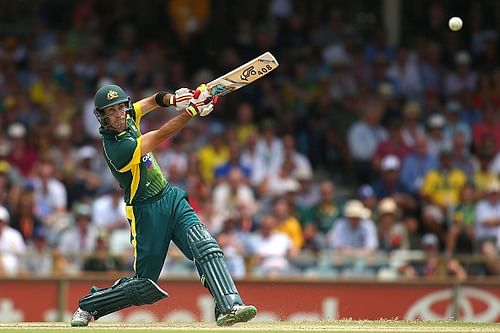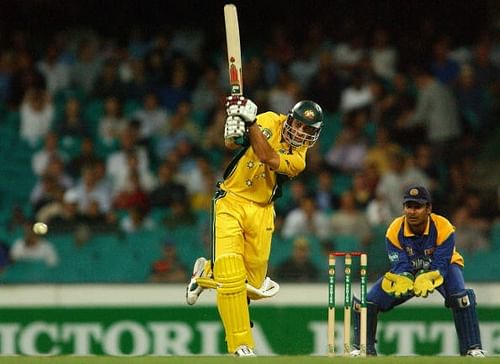
Why Glenn Maxwell should bat at 5 and take more responsibility with the bat

Australia beat England by 8 wickets in the final ODI at OId Trafford on Sunday to clinch the 5-match series 3-2. Helped by a superb bowling effort from the likes of Mitchell Marsh and Pat Cummins, the Steven Smith led side ensured that they returned home with some silverware after losing the Ashes 3-2 to the hosts.
There were some important positives for Australia in the series. Pat Cummins emerged as a real threat for the batsman and ended up as the highest wicket-taker in the series with 12 scalps to his name. The batting of Mattew Wade lower down the order proved to be extremely crucial for Australia on more than one occasion.
But perhaps, the biggest discovery, if you may call it so, from the bilateral series was the exploits of Glenn Maxwell who provided yet another glimpse of the massive talent that he has under his disposal. With the bat, he was 5th highest run-getter with a tally of 166 runs in 5 games at an average of 41.50. With the white cherry in hand, he took 6 wickets at an economy rate of 5.08.
Yet his most breathtaking moments came in the field, particularly in the 4th ODI at Headingley where he took two stunning catches, one at point and the other at the midwicket boundary to dismiss Eoin Morgan and Liam Plunkett respectively at crucial junctures of England’s chase.
Now there is little doubt that this series has marked the beginning of a new era in Australian cricket. Smith has taken over the leadership in the Test & ODI formats of the game while the likes of Michael Clarke & Brad Haddin have called it quits from all forms of international cricket.
Moving forward, if one has a look at the Australian batting line-up, specifically in ODI cricket, the new look opening combination will in all probability be David Warner with Aaron Finch while Joe Burns is likely to be in reserves.
Smith and George Bailey are likely to follow the openers while the number 6 place could either go to Shane Watson, who has called it a day already in Test cricket or the promising Mitchell Marsh with Wade coming in at 7.
Time for Maxwell to move into the next level
That leaves us with the number 5 position, which I believe should be the position for Maxwell to bat at in the forthcoming matches. In the absence of someone like Clarke, the time has now arrived for the Victorian to take up the responsibility of playing a key role in the middle-order.
For a large part of his career, prior to the year 2015, Maxwell was known to be a hit-and-miss batsman, someone who blew hot and cold frequently. But since the start of this year, the 26-year-old has shown increased levels of maturity in his approach to batting. The 95 against England in the final of the triangular series in Perth & the century in the 2015 World Cup against Sri Lanka at Sydney are some examples.

In the ODI series against England, he helped Australia recover from a position of 30 for 3 in the game at Headingley by playing a counter-attacking innings of 85 from 64 balls that got their innings back on track.
Even in the Perth innings against the same opponent, he scored the 95 runs off 98 balls which helped his team recover from a score of 60 for 4 to post a match-winning total. These two innings are proof that he can play both the quickfire & steady type of innings, as required by the side.
Many a time, Australia would find themselves in such a position as the one on top and in such a case, Maxwell would be expected to bail them out of such a scenario.
Chance to play dual roles
While both the above situations came while batting first, Maxwell has the chance to be equally effective while Australia are tracking a total down. If one has a look at the history of ODI cricket, the players who have batted at the number 5 or 6 position have always played a vital role in finishing off games.
Michael Bevan, considered among the greatest finishers in 50-over cricket, played many a critical innings for Australia walking in at the No 6 spot. MS Dhoni played, perhaps his most significant knock at number 5 in the World Cup final of 2011 and has played innumerable match-winning knocks for India at number 6 as well.
In combination with the batsman at 6, Maxwell has an excellent opportunity to close out matches for Australia, which would also help him in increasing his versatility as a cricketer.

During the Sourav Ganguly-era, Rahul Dravid, not only doubled up as a batsman wicket-keeper but on many occasions played the role of a finisher to perfection. One of the memorable instances that come to mind was in the game against Pakistan at Centurion in the 2003 World Cup, where batting at 5, he closed the game out in partnership with Yuvraj Singh after Sachin Tendulkar had played one of his finest ODI innings.
The ‘Big Show’ can maybe take a leaf out of the ‘The Wall’s’ book.